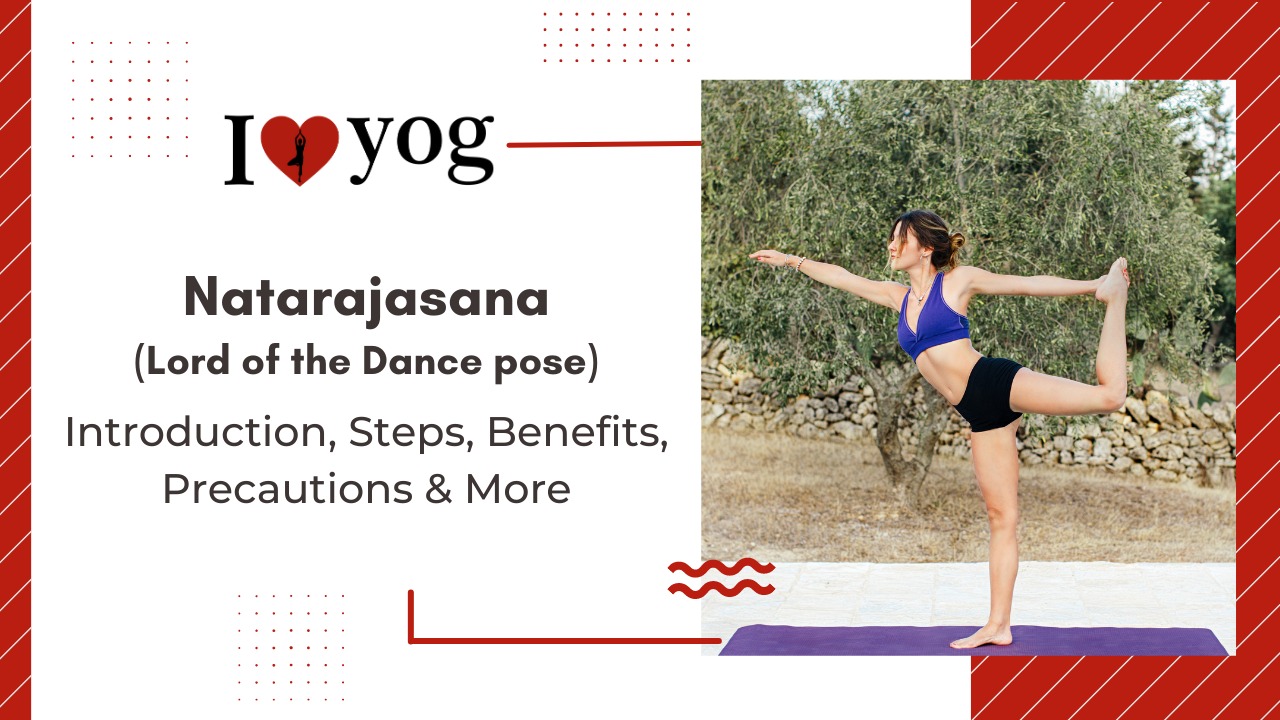What You Should Know Prior to Attempting NatrajAsana?
The pose should be performed on an empty stomach in the morning.
– Even if practiced in the evening or at any other time of day, the stomach, bladder, and bowel should be empty.
– If it is practiced at any other time of day outside the early morning, the practitioner should consume food 4 to 6 hours prior to practice. This will ensure that the stomach is empty by the time the individual assumes the posture, and the energy obtained from the food will aid in performing the pose with ease.
Preparatory Poses
- Anjenayasana (Low Lunge)
- Modest Warrior
- Virasana (Hero Pose) (Hero Pose)
- Virabhadrasana III (Warrior Pose III)
- Ardha Chandra Chapasana
- Dhanurasana (Bow Pose)
- Eka Pada Rajakapotasana (One-Legged King Pigeon Pose)
- Ustrasana (Camel Pose)
- Gomukhasana (Cow Face Pose)
- Yogasana Level – Intermediate
- Yogasana Style – standing
- Yogasana Repetitions – Once on each foot
- Yogasana Strengthens – Shoulders, Thighs, Abdomen, Thorax, and Groin are strengthened through Yogasana.
- Yogasana Stretches – Lower Extremities
Natarajasana’s Effect on the tri dosha
How To Do Natarajasana Posture/Asana?
- Assume Mountain Pose (Tadasana) with your back to the front of the mat. Take note of the symmetry between your pelvis and torso.
- Press down through the tops of your large toes and raise your inner arches.
- Rotate your inner thighs toward the back wall while lowering your tailbone.
- Raise your sternum away from your belly button and relax your front ribs.
- flex your right knee and bring the right heel toward your back. Reach your right hand behind you to grasp your ankle. Optimally, you should reach from the inside with your palm facing to the right and your shoulder in external rotation.
- Place your right knee next to your left knee. Observe which elements of Tadasana are no longer present.
- To restore symmetry to your body, press down with your left big toe mound, draw your left outer hip towards the midline, and align your right pelvis and chest with your left.
- Maintain your body’s symmetry as you begin to press your right thigh back and up. Lead with your inner thigh and push your right great toe away from you. Reach your left arm simultaneously forward and up, leading with the inner upper arm.
- Reach your sternum away from your navel to maintain chest elevation as you extend your right thigh back and up. Keep your right knee in toward the midline as opposed to splaying it outward.
- Hold for five to ten breaths, then return to Tadasana.
- Repeat on the opposite side.
Benefits Of Natarajasana Yoga Posture/Asana?
- Dancer Pose enhances balance, concentration, postural awareness, proprioception (a sensation of your body’s location and movement in space), and body awareness.
- It can increase energy, combat weariness, and bolster confidence. It strengthens the abdominal and back muscles while stretching the chest and shoulders.
- It strengthens the front of your hip (hip flexor), your thigh (while also stretching the rear of your thigh/hamstring), your shin, and your ankle on the standing leg.
- It strengthens your glutes and the back of your thigh on the elevated leg (hamstring).
- Additionally, Dancer Pose stretches the front of the hip (hip flexor), the front of the thigh (quadriceps), and the ankle.
- This position can aid in weight loss, as you tend to burn calories when practising it.
- This posture increases the flexibility of the spine, shoulders, and hamstrings.
- Consistent practice improves your balance.
- It is an effective stress reliever, soothing the mind.
- It significantly enhances your digestive system.
- You will discover that your concentration is intensifying.
- After practising this position, you will feel energized because it engages your entire body.
Natarajasana Contraindications And Precautions
Before performing this asana, you must keep in mind the following precautions.
- Avoid this asana at all costs if your blood pressure is low.
- When beginning to practise this asana, you could ask your instructor for assistance in gaining balance. Before performing this asana, it is best to see a doctor.
Science Behind Natarajasana
This asana is a lovely combination of structure and flow, and it represents the graceful Nataraja’s dance. It contributes to your strength and enlarges your mind and body, endowing them with such grace and force. It is a profound backbend. As you bend and balance your body on one leg, you are perpetually challenged. When the problem is solved, a sense of peace and tranquilly ensues. This posture expands the heart. It requires us to be stable while at ease, devoted while unattached, engaged while at leisure. When we are receptive to and accepting of both movement and structure, this asana facilitates clear communication between ourselves and our inner teacher.
Beginners Tips For Natarajasana
When elevating the leg, many novices experience cramping in the back of the thigh. Keep the ankle of your lifted foot flexible to avoid this (that is, draw the top of your foot toward the shin.)
Advanced Changes in Pose
To deepen the stance, you might grasp the inner left foot with your right hand behind your back. Grab the foot’s outer border with your right hand. This more difficult position will improve your ability to maintain balance. This variant will elevate your chest and extend your shoulders more deeply.
Related Yoga Poses/Asanas –
Counter Poses
- Uttanasana (Standing Forward Bend)
- Adho Mukha Svanasana (Downward-Facing Dog Pose)
- Balasana (Child’s Pose)
Reference:-
- https://www-easyayurveda-com.cdn.ampproject.org/v/s/www.easyayurveda.com/2021/02/22/natarajasana/?amp_gsa=1&_js_v=a9&usqp=mq331AQKKAFQArABIIACAw%3D%3D#impact_on_doshas_and_tissues
- https://www.verywellfit.com/king-dancer-pose-natarajasana-pose-3567090
- https://www.yogajournal.com/poses/lord-of-the-dance-pose/


